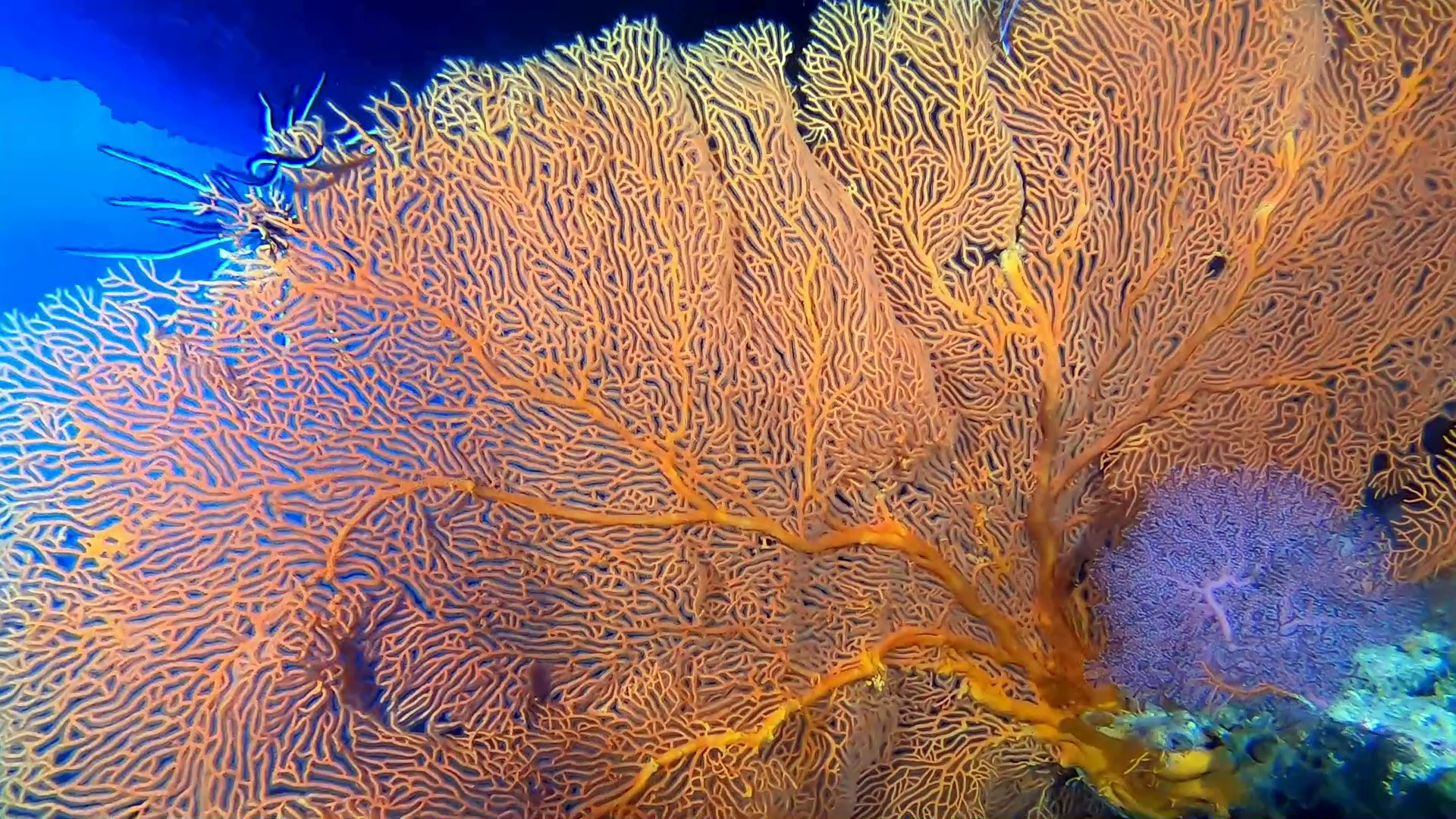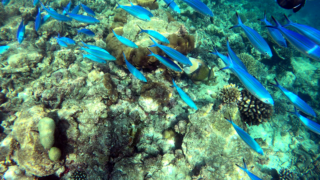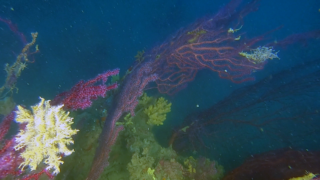Sea squirts are not sponges as it would appear at first glance but are marine filtering animals belonging to the class of tunicates. Sea squirts are present in all the world’s oceans and are particularly common in coastal areas. This Red sea squirt Halocynthia papillosa (Ascidia rossa) lives in the eastern Atlantic Ocean, in the southern Pacific Ocean and is very common in the Mediterranean Sea.
It lives among the meadows of Posidonia oceanica or on coral seabase, from about 3 to 100 meters deep. We found it in a hole a few meters deep along the coast and filmed it while snorkelling.
Halocynthia papillosa, Red sea squirt is also called sea potato (Halocynthia papillosa Linnaeus, 1767) is a sea squirt of the Pyuridae family.
Description
The body has the shape of a bag. The tunic, leathery and rough to the touch, is of variable color depending on the depth and the light received: more red in the illuminated parts, tending towards pink or yellowish-white if in the shade. It has two siphons, the upper one for inhalation and the lateral one for exhalation, through which it introduces the nourishment in suspension into the gill sac for filtering. The siphon opening has a crown of bristles and a characteristic cross shape. Up to about 10-12 centimeters long.
Distribution and habitat
It is widespread in the eastern Atlantic Ocean, in the southern Pacific Ocean and is very common in the Mediterranean Sea. It lives among the meadows of Posidonia oceanica or on coral, from about 3 to 100 meters deep.
Reproduction
It reproduces in November, both sexually and asexually by budding. The tailed larva has a short pelagic cycle, at the end of which it fixes itself to the substrate.
https://it.wikipedia.org/wiki/Halocynthia_papillosa
https://www.ilgiornaledeimarinai.it/ecco-perche-le-ascidie-sono-creature-marine-straordinarie/
Gallery
 English
English Italiano
Italiano





